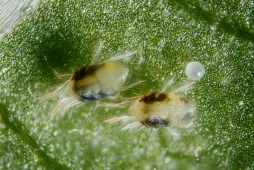Cordyline fruticosa 'Purple Compacta', a mini Hawaiian spinach
Cordyline fruticosa 'Purple Compacta' has inherited its lanceolate leaves from its ancestor, the Hawaiian spinach. But it stands out for its compact silhouette and deep colors.
How to recognize Cordyline fruticosa 'Purple compacta'?
Cordyline fruticosa 'Purple Compacta' is an upright, dense shrub. It rarely exceeds one metre in height or width.
The straight stem branches little. Thin, it lignifies with age and forms a trunk. The trunk is adorned with the leaf scars left when the leaves fall off.
The leaf blades are smooth and almost shiny. The lanceolate leaves are 30 to 50 centimetres long and five to ten centimetres wide. Their color ranges from deep purple to intense violet.
Cordyline 'Purple Compacta' flowers are white or lilac. They are grouped in panicles and appear in summer.
They turn into fruit, red berries that contain the seeds.
In some Pacific islands, cordyline fruticosa is said to have medicinal properties. But the plant is slightly toxic if ingested. It causes vomiting and digestive disorders, especially in pets such as dogs and cats.
Our maintenance tips
Cordylines 'Purple compacta like the sun. But they can't stand the hottest rays. Variegated varieties are particularly sensitive. Keep this in mind when setting up your plant in its final location.
Watering
Water the base of your cordyline 'Purple compacta when the soil is about three centimeters dry. Your plant likes rainwater, but will also tolerate mains water.
Don't let water stagnate in the planter or saucer. It will rot the roots.
Repotting
In spring, transfer your Cordyline fructiosa ‘Purple compacta’ to a larger pot, so that it can continue to grow.
Obtain a pierced pot larger than the root ball. Choose a terracotta model. This material optimizes drainage and limits the risk of root rot in the event of excess water.
Fill the bottom with clay balls or gravel.
Then add a layer of universal or Mediterranean potting soil. Plant your Cordyline 'Purple compacta in the center. Fill in with substrate. Do not bury the collar.
Tamp and water to remove air bubbles. You can mulch the base with a mineral material to keep the soil cool.
Fertilization
You can stimulate the development of your plant during its growth phase, in spring and summer, with fertilizer.
Apply a liquid fertilizer for green plants to stimulate growth.
You can stimulate the growth of your plant during its growth phase, in spring and summer, with fertilizer.
Place compost at the foot of your Cordyline 'Purple compacta.
Prune
Using a clean, sharp pruning shears, remove the wilted leaves.
Plantation
Once the last spring frosts have passed, you can plant.
Choose a location sheltered from the wind. The location must be sunny. But, if you live in a region where the sun is scorching in summer, avoid a south-facing exposure.
While the rootball of your Cordyline 'Purple compacta is soaking, dig a hole three times as big. Line the bottom with river sand, pebbles or gravel to improve drainage.
Mix equal parts garden soil and universal potting soil. Add a layer of substrate.
Plant your plant. The rootball should be level with the ground and the collar should not be buried. Fill in with your mix of potting soil and garden soil.
Water generously and mulch with crushed slate or gravel. This mineral mulch keeps the soil cool in summer and protects it from the cold in winter.
Cutting
Cutting is carried out during the strong growth phase, generally in spring and early summer.
Using your hands or a clean, sharp tool, separate one of the shoots that has formed at the base of the plant. Choose a young shoot with roots.
Plant your cutting in a pierced pot lined with potting soil for seedlings and plantations. Spray the substrate with non-calcareous water.
The graft takes better in a stifled environment. Cover the plant with a translucent plastic bag or cloche.
Place your young plant in a bright room where the temperature is between 20 and 25°.
The appearance of new leaves indicates that your cutting is taking root.
Diseases / Threats
Information
| Family | Asparagaceae - Asparagaceae |
| Type | Cordyline - Cordyline |
| Species | Cordyline fruticosa - Cordyline fruticosa |
| Lifecycle | Perennial |
| Foliage | Evergreen |
| Exposure | |
| Substrats | |
| Planting methods |
Open ground In pots In tubs |
| Category | |
| Tag |
Beginner |
| Origin |
Oceania |
| Hardiness (USDA) | 10a |
| Leaf color |
|
| Flower colors |
|
| Fruit color |
|
Discover plants from the same family
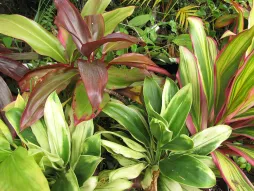
Cordyline fruticosa
Discover
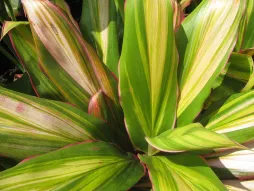
Cordyline 'Kiwi
Discover
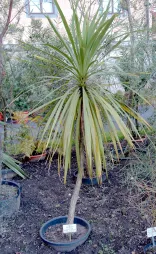
Cordyline australe
Discover
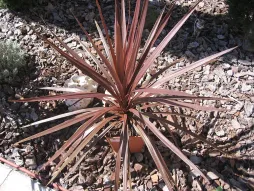
Cordyline 'Red Star
Discover












